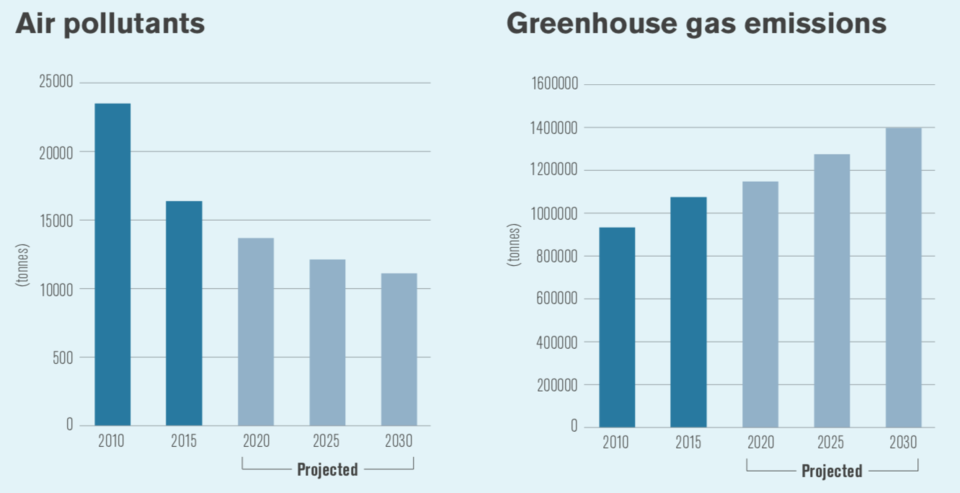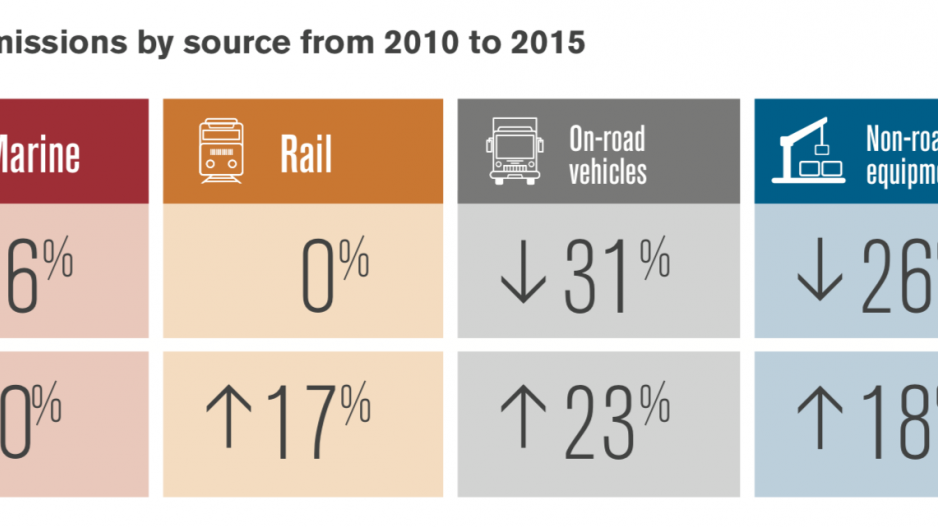The Port of Vancouver has reduced air pollutant emissions while increasing cargo throughput, according to a recently released report. However, reducing greenhouse gas emissions (GHGs) has been more challenging.
Air pollutants from marine vessels have decreased 36% from 2010 to 2015 while the volume of goods moving through the Vancouver port has increased 16.9% from 122.8 million gross registered tonnage in 2010 to 143.6 million gross registered tonnage in 2015, according to the Vancouver Fraser Port Authority report.
While marine vessels' GHGs have increased 10% over the same five-year period, GHGs per tonne of cargo moving through the port have fallen.
The Port of Vancouver and other northern Pacific ports are partners in the Northwest Ports Clean Air Strategy aimed at reducing port-related air emission in the Puget Sound-Georgia Basin airshed. The Port of Vancouver reached its 2015 goal of reducing greenhouse gas emission per tonne of cargo by 10%. The next goal is a 15% reduction by 2020.

The port projects that these trends will continue through to 2030; air pollutant emissions are expected to continue to drop while cargo throughput and GHGs will rise.
The port emissions inventory report projects GHGs will hit 1.4 million tonnes by 2030 compared with just over 900,000 tonnes in 2015.
“As stewards of Canada’s largest port, we recognize the leadership role we must play in facilitating emission reductions, and will continue to work closely with government, industry and port users to address greenhouse gas emissions,” said Duncan Wilson, vice-president of corporate social responsibility for the Vancouver Fraser Port Authority, in a press release.
Marine vessels posted the largest drop in emissions of all port equipment and the second-lowest GHG increases behind administrative buildings.
Rail was the only emission source that did not decrease its air pollutants between 2010 to 2015.
On-road vehicles used by the port were responsible for the largest increase in greenhouse gas emissions. They increased 23% from 2010 to 2015.
Fossil fuels are responsible for 95% of the energy used by the port. Electricity contributes the remaining 5%.
The Vancouver Fraser Port Authority report highlights the need for the Port of Vancouver to work with government and industry stakeholders to increase the use of alternative forms of energy like hydroelectricity.




